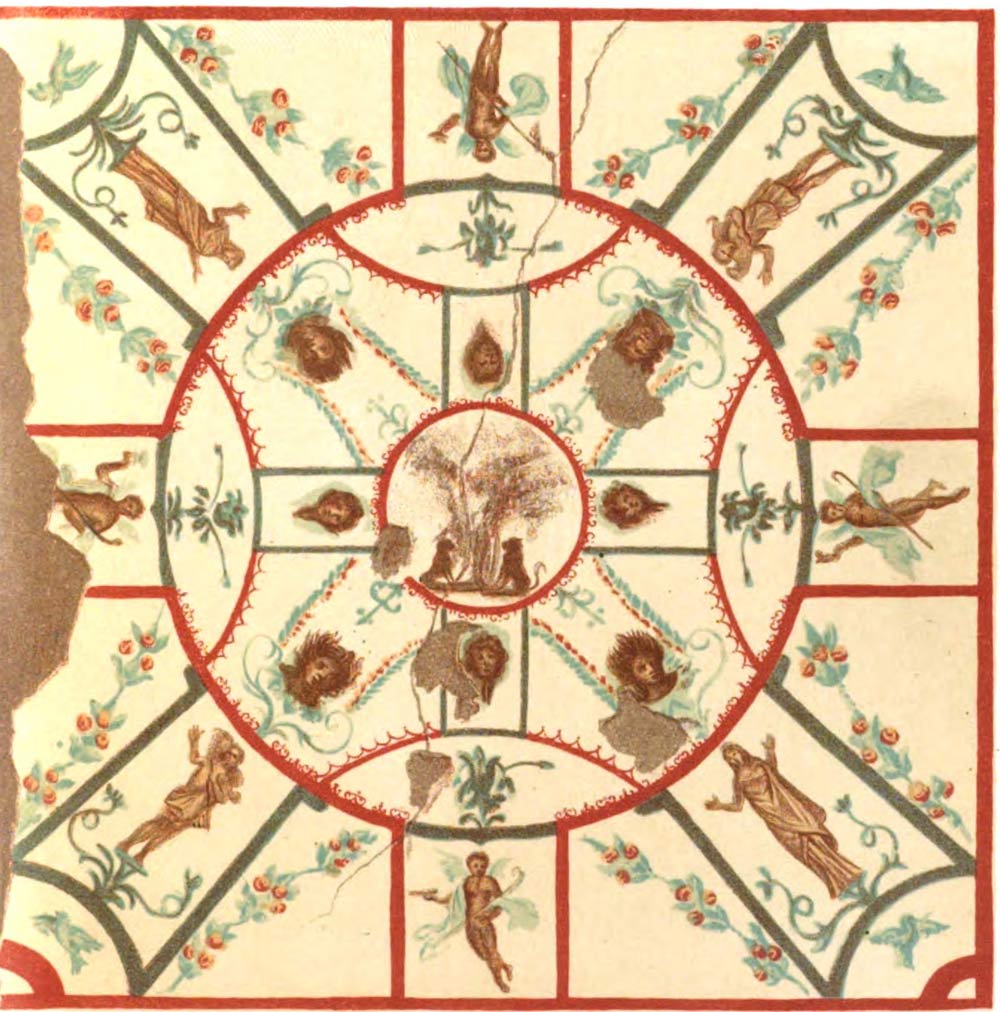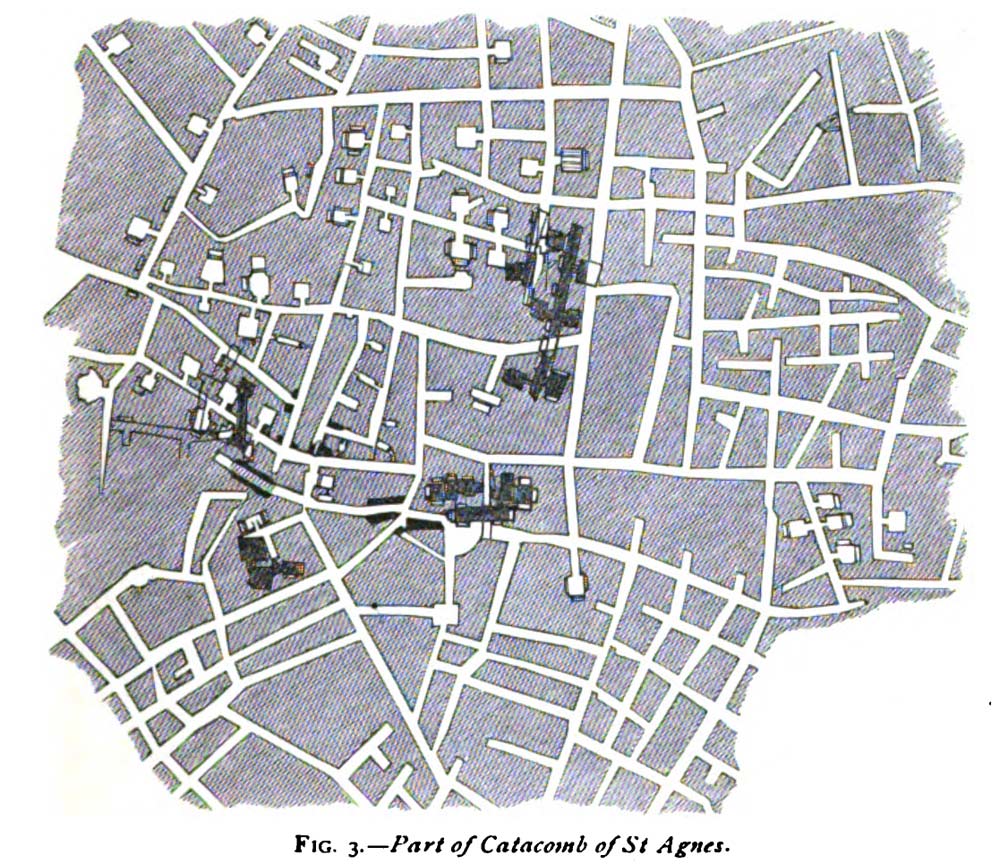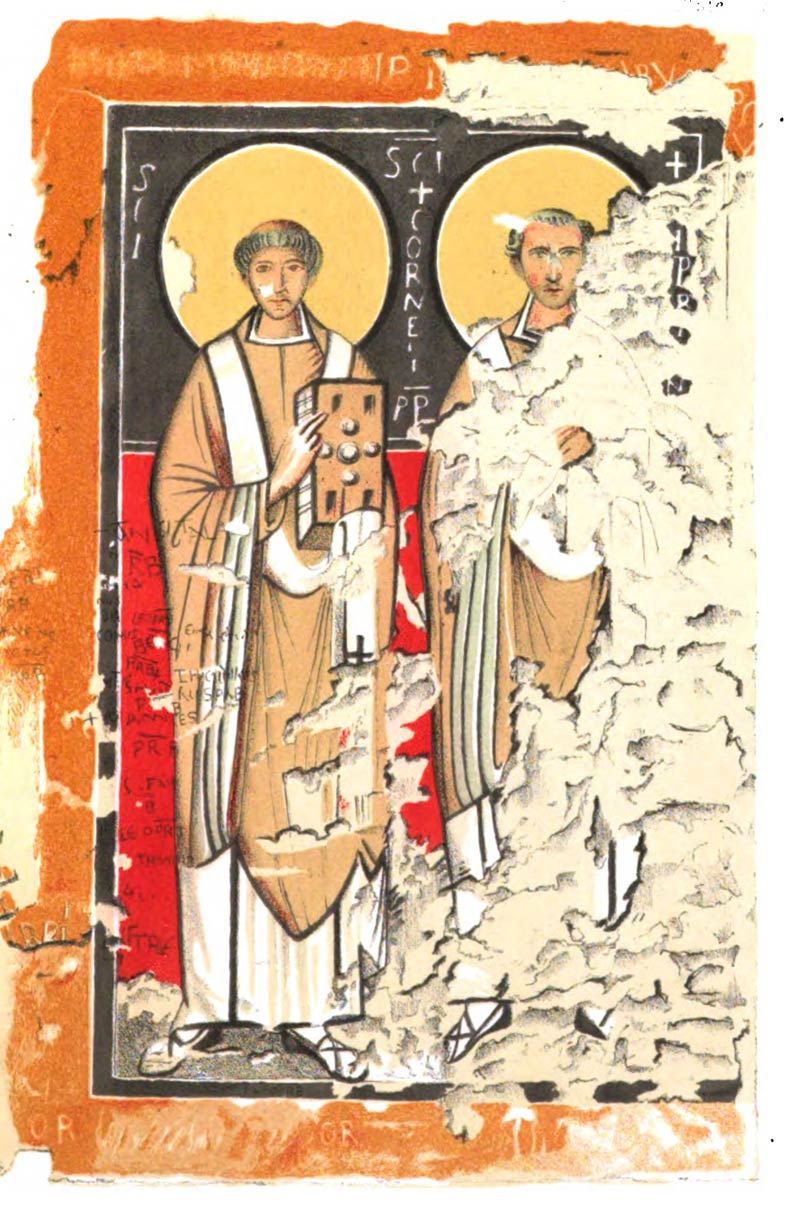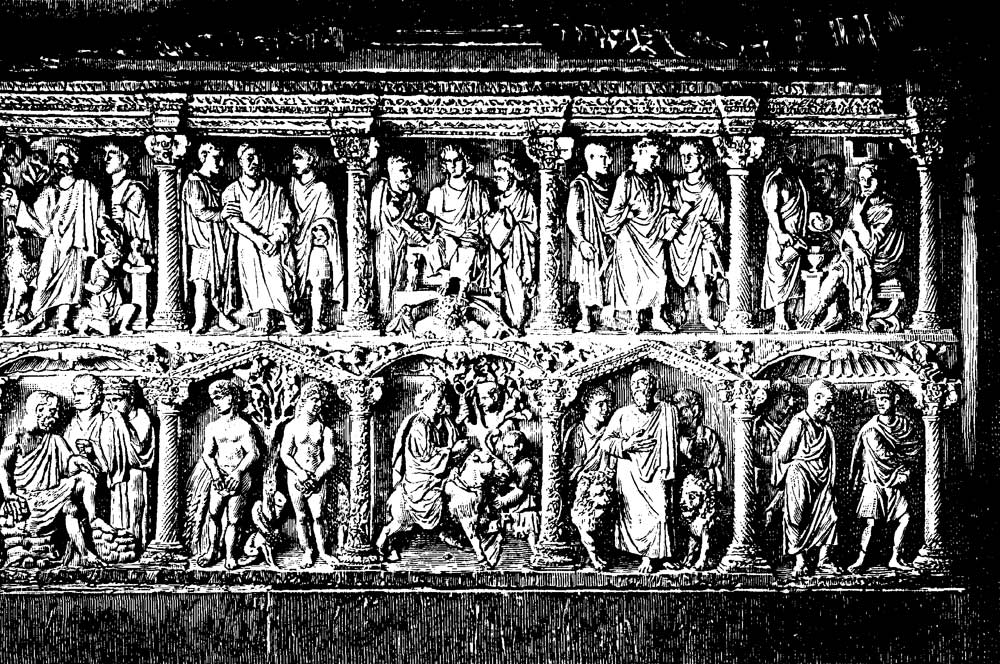In Photos: A Journey Through Early Christian Rome
Frescoes, Papal Crypts & Early Christian Writing

From frescoes depicting Jonas and the whale to a reconstruction of a papal crypt within the Roman catacombs and some of the earliest Christian writings, early Christian Rome holds a bounty of history. While most of the 19th-century publications used hand drawings, as you move into the 20th century, photography became more common. Here's a look at early Christian artifacts through the eyes of 19th-century scholars.
(Shown above, an old engraved illustration of catacombs and Saint Thraso, or Saint Saturninus, from the Trousset encyclopedia 1886 – 1891.)
Catacombs of Rome

The catacombs of Rome contain Christian art of both beauty and complexity. This work was drawn on a ceiling near the Crypts of Lucina and has been interpreted as an image of Daniel (at center) with lions on all sides. Images of the Good Shepherd and a woman, possibly the Virgin Mary, surround them. The image is from the Roma Sotterranea, a volume discussing the catacombs, published in 1869. Early scholarship dated this painting to the second century although more recent work suggests that the earliest evidence for Christian occupation of the catacombs doesn't begin until the early third.
Catacomb Map

Early explorers struggled to map and document the catacombs in detail using handcrafted drawings. Today scientists are tackling the challenge with laser scanners and 3-D mapping. This mid 19th-century map includes part of the catacombs of St. Agnes, a teenager who was beheaded in A.D. 304 and is believed to be buried there. This image is also from the Roma Sotterranea, 1869.
St. Hermes Wall

This drawing, which appears in the Roma Sotterranea, 1869, shows a wall of a Roman catacomb as it appeared in the mid-19th century. Some of the niches are still sealed. This part of the catacomb was named after St. Hermes who died in A.D. 120. The remains date to centuries after that.
Saintly Medals

Bronze medals of Saints Peter and Paul found in the "cemetery of Saint Domitilla," part of the Roman catacombs. Early scholars had a hard time dating the artifacts they found in the catacombs and tended to give them early dates in the second and even first century. Current scholarly research suggests that Christian art, from the catacombs, seems to begin in the third century.
Early Inscriptions

In his 1880 work "Christian Archaeology," Charles Wesley Bennett illustrates a variety of Christian inscriptions (shown here) that he believed to be early. Notice that in place of a cross a fish is used instead.
Get the world’s most fascinating discoveries delivered straight to your inbox.
Papal Crypt

A mid-19th century reconstruction, by Giovanni Battista de Rossi, of what the papal crypt of the Roman catacombs would have looked like. The crypt housed the remains of third-century popes.
Crowd of Holy Ones

This inscription, restored by Giovanni Battista de Rossi in the mid-19th century, is a remarkable example of early Christian writing. Located in the papal crypt, a burial place for early popes, it was dedicated by the pope Damasus, a person whose life coincided with Constantine I, the Roman emperor who legalized Christianity in the fourth century. The lengthy inscription begins "Here if you would know lie heaped together a whole crowd of holy ones..."
Roman Fresco

A fresco from the Crypts of Lucina depicts Saint Cornelius, a man who was elected pope in A.D. 251, and Cyprian who was a bishop of Carthage during the same period.
Jonas and the Whale

A fresco from Rome showing what appears to be an early account of Jonas and the whale. In this depiction the "whale" has a head in the shape of a horse along with hooves.
Sarcophagus of Junius Bassus

As we move into the late 19th and early 20th centuries scholars begin to make use of photography to record and study ancient Christian artifacts. This image of the Sarcophagus of Junius Bassus was published in the late 19th century in the Nordisk familjebok, a Swedish encyclopedia. Bassus was a wealthy Roman Christian who was involved in politics, and who passed away in A.D. 359. The artifact shows images from the bible and is considered to be one of the most impressive works of early Christian art.

Owen Jarus is a regular contributor to Live Science who writes about archaeology and humans' past. He has also written for The Independent (UK), The Canadian Press (CP) and The Associated Press (AP), among others. Owen has a bachelor of arts degree from the University of Toronto and a journalism degree from Ryerson University.


